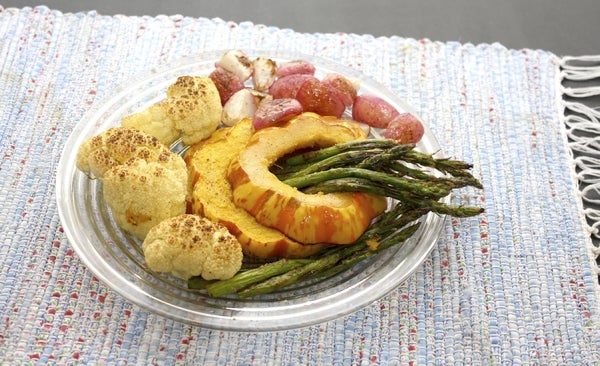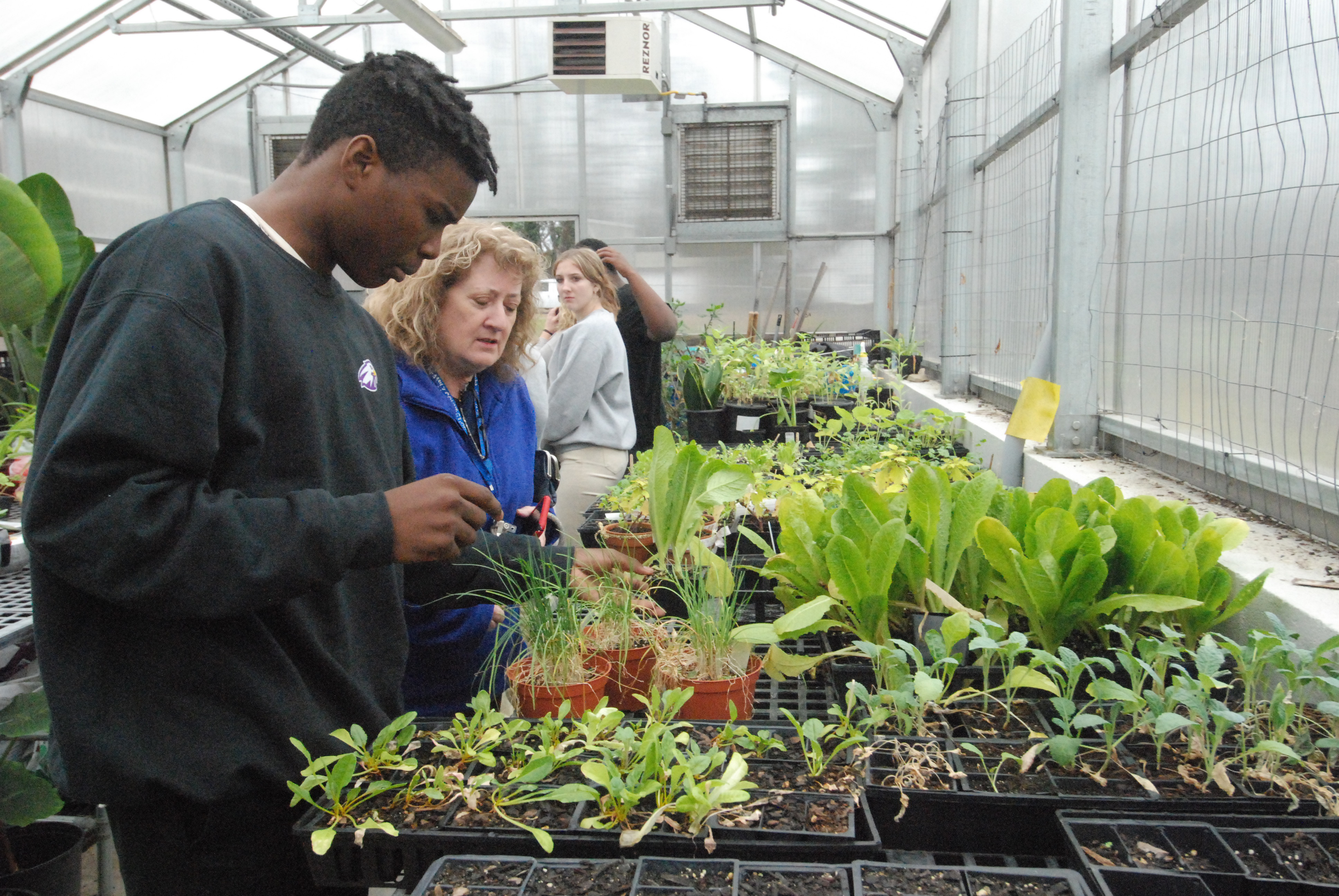Turn up the heat for roasted vegetables
Published 12:00 am Tuesday, February 16, 2016

- Deirdre Parker Smith/Salisbury Post When winter gives you blah vegetables, liven them up by roasting them.
By Deirdre Parker Smith
deirdre.smith@salisburypost.com
This time of year, it’s hard to find fresh vegetables, especially if you want to eat locally.
And some of what’s in the store lacks flavor from being picked before ripeness and stored before shipping.
Winter tomatoes can hardly be called tomatoes, with their pale flesh and lack of acidity and flavor. You can’t ripen it at home — it just gets softer, and on a salad, they often seem tough.
There are solutions to these problems.
The easiest possible one is roasting.
Roasting vegetables requires no real recipe, just time and a little attention.
And just about every vegetable can be roasted, developing a deeper flavor and even hidden qualities.
My most recent revelation was roasted radishes. Yes, radishes.
We received some in our winter harvest box from Bread Riot. Tired of simply slicing them for salad, my husband looked up some recipes and discovered they could be roasted. I imagined they would be bitter and watery, but no, they were delicious — sweet, juicy and with just a hint of tang, almost like a sweet turnip.
Roasted cauliflower is almost like popcorn and roasted asparagus can get as crispy on the outside as a bread stick.
All you need is a baking sheet, a little oil, salt and pepper.
Most vegetables roast at 425 degrees to get the best flavor, with great crispiness, in the least amount of time. For faster roasting try 450 degrees, but keep an eye on the vegetables so they don’t go from beautiful to burned.
Try to cut the vegetables all the same size for even cooking. We just halved the radishes, and that worked perfectly.
You can roast several different vegetables at once, but keep in mind, a carrot takes longer to cook than say, cauliflower. One way to roast several different veggies is to add them to the baking sheet at different times. Or, you can use two sheets to bake your favorites.
Roasting veggies is particularly easy when cooking for one or two. Just cook what you will eat in one sitting. Roast vegetables are best on the first night, but for the second night, they could be pureed smooth for a side dish or used in a soup. Cold, roasted asparagus is a nice surprise in a salad.
Here are some general cooking times: Soft vegetables, like green beans and cauliflower take about 20 minutes, while harder things like potatoes, turnip or squash will take 30 minutes or longer. Soft vegetables can get cooked to the point of incineration, so be sure to check them a couple times during cooking and stir them a bit on the sheet pan.
Zucchini, summer squash and bell peppers would cook at the same time together.
Thin veggies like green beans and asparagus would take about 10-20 minutes.
Onions are transformed in the oven, but take 30 to 45 minutes, depending on the crispness you’re looking for.
Large pieces take longer than small pieces.
And no, you cannot roast vegetables in a microwave — they won’t crisp.
Once the vegetables are cooked, you can add things like crumbled cheese, fresh herbs like rosemary or parsley and flavored oils.
Roasted tomatoes concentrate the flavor and create a whole new taste. If you remember your grandmother’s baked tomatoes, roasting takes them up a notch.
A roasted tomato sprinkled with parmesan cheese is pretty special.
Also try things like balsamic vinegar either before or after roasting. Adding the vinegar before roasting will allow it to caramelize on the veggies.
Something like cauliflower would taste great with a sprinkling of lemon juice once it’s out of the pan.
Roasting is also a good way to try veggies you aren’t familiar with, like fennel.
Here are a couple other tips:
Lining the pan with parchment paper can help with cleanup.
For a browner vegetable, turn it over during cooking to get crispness on both sides.
Roast cauliflower and broccoli together with olive oil, salt and pepper. Sprinkle with feta cheese or goat cheese.
Or, puree the vegetables and serve as a side dish in place of potatoes.
Try a mix of winter squash, such as acorn or butternut, and brussels sprouts. The sweet squash will be a nice accompaniment to the slightly bitter sprouts, which lose a lot of their sharp flavor when roasted.
Drizzle with a little balsamic glaze, made with 1/4 cup olive oil, 1/4 cup balsamic vinegar and two tablespoons honey, along with 2 teapsoons of dijon or whole grain mustard. Add just a teaspoon of lemon juice and cook in small saucepan until thickened and reduced, about 10 minutes. You can do that while the vegetables roast.
Roast a tray of root vegetables: carrots, beets, potatoes, turnips, radishes and serve with a dipping sauce made of 1 cup Greek yogurt blended with a sprig of fresh thyme, a few rosemary leaves and a little chopped parsley.
Any roast vegetable could be served with rice or brown rice or pasta for a filling and healthy meal.
Here’s a super simple recipe for soup using roasted vegetables.
Roasted Vegetable Soup
1 quart vegetables that have been roasted with olive oil, salt and pepper
3-4 cups chicken stock
Salt and pepper, to taste
Heat 3 cups of the stock in a large saucepan. Puree the roasted vegetables in a food processor in two batches with the stock. Return puree to the saucepan and add additional stock to reach the desired consistency.
For a decadent soup, add a pint of half and half or cream and heat through.





